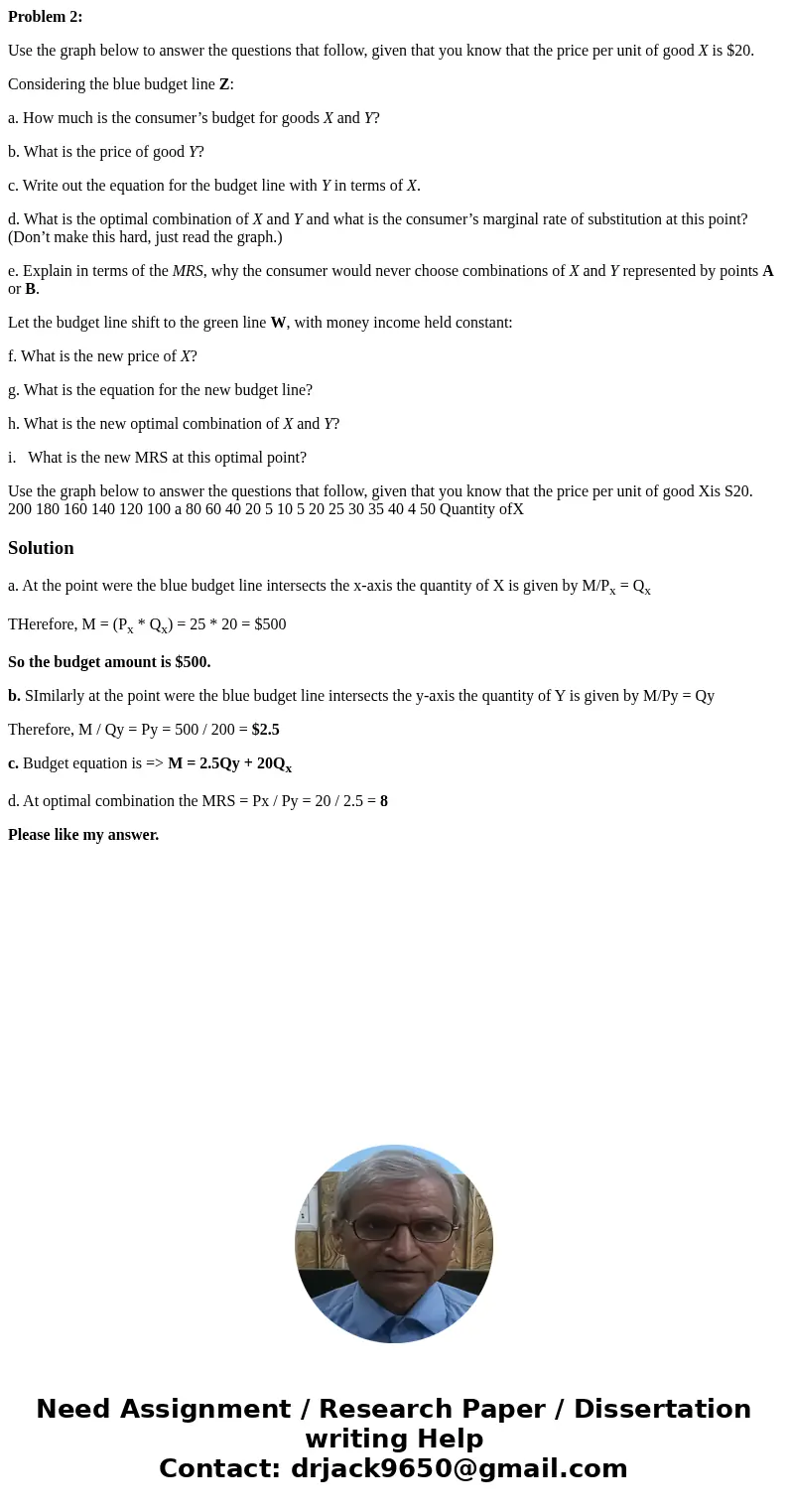Problem 2 Use the graph below to answer the questions that f
Problem 2:
Use the graph below to answer the questions that follow, given that you know that the price per unit of good X is $20.
Considering the blue budget line Z:
a. How much is the consumer’s budget for goods X and Y?
b. What is the price of good Y?
c. Write out the equation for the budget line with Y in terms of X.
d. What is the optimal combination of X and Y and what is the consumer’s marginal rate of substitution at this point? (Don’t make this hard, just read the graph.)
e. Explain in terms of the MRS, why the consumer would never choose combinations of X and Y represented by points A or B.
Let the budget line shift to the green line W, with money income held constant:
f. What is the new price of X?
g. What is the equation for the new budget line?
h. What is the new optimal combination of X and Y?
i. What is the new MRS at this optimal point?
Use the graph below to answer the questions that follow, given that you know that the price per unit of good Xis S20. 200 180 160 140 120 100 a 80 60 40 20 5 10 5 20 25 30 35 40 4 50 Quantity ofXSolution
a. At the point were the blue budget line intersects the x-axis the quantity of X is given by M/Px = Qx
THerefore, M = (Px * Qx) = 25 * 20 = $500
So the budget amount is $500.
b. SImilarly at the point were the blue budget line intersects the y-axis the quantity of Y is given by M/Py = Qy
Therefore, M / Qy = Py = 500 / 200 = $2.5
c. Budget equation is => M = 2.5Qy + 20Qx
d. At optimal combination the MRS = Px / Py = 20 / 2.5 = 8
Please like my answer.

 Homework Sourse
Homework Sourse